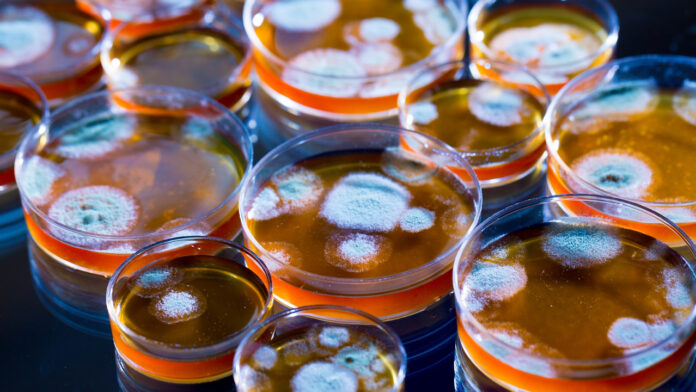Penicillin, often hailed as the world’s first antibiotic, revolutionized the field of medicine and transformed the treatment of bacterial infections. In this article, we embark on a journey through time to explore the fascinating story of penicillin, from its serendipitous discovery in a London laboratory to its global impact on healthcare and infectious disease control.
Accidental Discovery
Alexander Fleming’s Observations: The story of penicillin begins in 1928 when Scottish bacteriologist Alexander Fleming made a serendipitous discovery. While studying bacterial cultures at St. Mary’s Hospital in London, Fleming noticed that a mold called Penicillium notatum had contaminated one of his petri dishes, inhibiting the growth of surrounding bacteria.
Antibacterial Properties: Upon closer inspection, Fleming observed that the mold produced a substance that killed a wide range of bacteria, including Staphylococcus aureus, a common pathogen responsible for infections in wounds and surgical sites. This discovery laid the foundation for the development of penicillin as an antibiotic.
Development and Refinement
Howard Florey and Ernst Chain: Fleming’s initial discovery of penicillin’s antibacterial properties garnered little attention until the 1940s when Australian pharmacologist Howard Florey and German-born biochemist Ernst Chain conducted further research on its therapeutic potential. Their work led to the isolation, purification, and mass production of penicillin for clinical use.
World War II: The development of penicillin coincided with World War II, creating an urgent need for effective treatments for wounded soldiers suffering from bacterial infections. Penicillin was deployed on a large scale to treat battlefield injuries and infectious diseases, saving countless lives and bolstering morale among troops.
Life-Saving Impact
Treatment of Infections: Penicillin’s introduction revolutionized the treatment of bacterial infections, offering a safe and effective alternative to earlier therapies such as sulfa drugs and mercury-based remedies. It proved particularly effective against streptococcal infections, pneumonia, syphilis, and other common ailments.
Public Health Milestones: The widespread use of penicillin contributed to significant reductions in mortality rates from infectious diseases, leading to dramatic improvements in public health and longevity. It played a pivotal role in controlling outbreaks of bacterial diseases and preventing complications from minor infections.
Challenges and Innovations
Antibiotic Resistance: Despite its success, penicillin’s effectiveness has been challenged by the emergence of antibiotic-resistant bacteria, which can render it ineffective against certain infections. Scientists continue to explore new strategies for combating antibiotic resistance and developing alternative treatments.
Semisynthetic Derivatives: To address concerns about antibiotic resistance and improve efficacy, researchers have developed semisynthetic derivatives of penicillin, such as amoxicillin and ampicillin, which exhibit broader spectrum activity and increased resistance to bacterial enzymes.
Cultural and Scientific Significance
Nobel Prize Recognition: In recognition of their pioneering work on penicillin, Alexander Fleming, Howard Florey, and Ernst Chain were awarded the Nobel Prize in Physiology or Medicine in 1945. Their discoveries revolutionized the field of microbiology and paved the way for future advancements in antibiotic therapy.
Medical Breakthroughs: Penicillin’s success paved the way for the development of other antibiotics and antimicrobial drugs, leading to significant advances in the treatment of infectious diseases and surgical procedures. It remains one of the most widely prescribed medications in the world, saving millions of lives annually.
Ongoing Research and Future Directions
Novel Antibiotics: In response to the growing threat of antibiotic resistance, researchers are exploring new avenues for antibiotic discovery, including natural products, synthetic compounds, and innovative treatment strategies. The search for novel antibiotics continues to be a priority in biomedical research.
Global Health Initiatives: International efforts to combat antibiotic resistance and promote responsible antibiotic use are underway, involving collaborations between governments, healthcare providers, pharmaceutical companies, and public health organizations. These initiatives aim to preserve the effectiveness of existing antibiotics and ensure access to lifesaving treatments for future generations.
Conclusion: Honoring Penicillin’s Legacy and Continuing Impact
In conclusion, penicillin stands as a shining example of scientific serendipity and human ingenuity, with its discovery reshaping the landscape of modern medicine and saving countless lives. From its humble origins in a London laboratory to its global impact on healthcare and infectious disease control, penicillin remains a symbol of hope, innovation, and progress in the ongoing fight against bacterial infections. As we celebrate its remarkable legacy, we are reminded of the importance of scientific discovery, collaboration, and perseverance in advancing human health and well-being.

